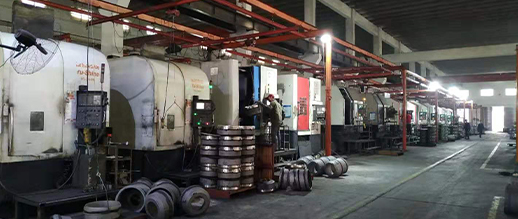16.5 x5 brake drum
Understanding 16.5% and 20% Brake Drum Efficiency
When discussing the performance and efficiency of braking systems, one of the critical components that come into play is the brake drum. Brake drums are integral in vehicles for creating friction and slowing down or stopping the vehicle effectively. This article will delve into the significance of brake drum efficiency, particularly focusing on the percentages of 16.5% and 20% as a basis for performance measurement.
What is Brake Drum Efficiency?
Brake drum efficiency refers to the capability of the brake drum to convert the rotational energy of the wheel into thermal energy through friction. When the brake pedal is pressed, brake shoes expand against the inner surface of the drum, creating friction. This process generates heat, which can decrease the drum's effectiveness if not managed properly. Therefore, understanding brake drum efficiency and the factors influencing it is paramount for maintaining optimal vehicle performance and safety.
The Importance of Efficiency Percentages
The percentages 16.5% and 20% represent two different levels of efficiency that can be achieved by different types of brake drums, or under various conditions. These values are essential as they provide insights into the braking system’s overall performance. A 20% efficiency indicates a more effective braking action compared to a 16.5% rating.
1. Performance Implications The percentage efficiency directly correlates with how quickly and effectively a vehicle can stop. A brake drum operating at 20% efficiency can bring a vehicle to a complete halt quicker than one operating at 16.5%. Such differences can be crucial in emergency situations where every fraction of a second counts.
2. Wear and Tear The efficiency of a brake drum is also related to its durability. Higher efficiency generally means that the brake system is better engineered and can handle more heat and friction without degrading quickly. Conversely, a lower efficiency (like 16.5%) may suggest that the brake components are subjected to more stress, potentially leading to faster wear and necessitating more frequent replacements.
3. Fuel Efficiency Performance-related to brake drums can also impact a vehicle’s fuel efficiency. When brakes are overworked or inefficient, they can lead to more resistance while driving, which can cause an increase in fuel consumption. A vehicle with efficient braking (20%) is not only safer but can also promote better overall energy usage during operation.
16.5 x5 brake drum

Factors Affecting Brake Drum Efficiency
Several factors can influence the brake drum efficiency and determine whether you achieve the desired performance level of 16.5% or 20%.
1. Material Quality The materials used in manufacturing the brake drum can significantly affect its efficiency. Higher quality materials tend to handle heat better and exhibit less wear over time.
2. Design The design of the brake drum itself, including its ventilation and surface area, impacts how effectively it can dissipate heat and manage friction.
3. Maintenance Regular maintenance practices, such as ensuring proper brake pad alignment, adjusting the brakes, and replacing worn-out components, can help maintain an efficient braking system.
4. Driving Conditions Driving in conditions that require more frequent braking, such as in heavy traffic or steep inclines, can influence the efficiency of the brake system. A vehicle consistently driven in such conditions may experience reduced efficiency if not equipped with appropriate brake technology.
Conclusion
In summary, understanding the efficiency levels of brake drums, such as 16.5% and 20%, is crucial for both vehicle performance and safety. Higher efficiency translates to better stopping power, improved durability, and potentially greater fuel efficiency. Vehicle owners should prioritize brake system maintenance and consider upgrading components to achieve optimal performance levels. Ultimately, investing in high-efficiency brake drums can lead to a safer and more reliable driving experience.
-
Truck Drum Brake Spring Replacement ProcedureNewsAug.22,2025
-
Evolution Of Brake Drum Function Designs In Automotive HistoryNewsAug.22,2025
-
Drum Brake Motor Thermal Management SolutionsNewsAug.22,2025
-
Essential tools for brakes and drums repair jobsNewsAug.22,2025
-
Trailer Drum Brake Self-Adjusting Mechanisms ExplainedNewsAug.22,2025
-
Brake Drum Types in Vintage Auto RestorationNewsAug.22,2025
-
Rear Drum Brakes Maintenance TipsNewsAug.04,2025


